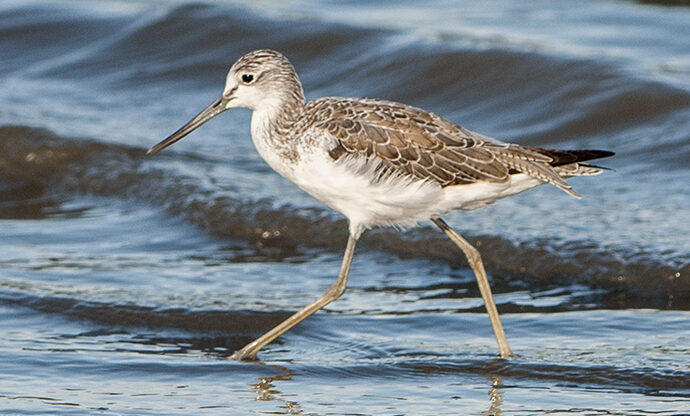Common Greenshank
Species and status overview
Conservation Status
Listed marine and migratory (CAMBA, JAMBA, ROKAMBA)
The Common Greenshank travels from its breeding grounds within palaearctic regions of Eurasia and North Africa and arrives in Australia from August to over-winter, having passed through the Torres Strait.
The Common Greenshank is found in a wide variety of inland wetlands and sheltered coastal habitats such as salt marsh, mangroves, seagrass, river estuaries, and deltas. They nest on the ground in the open, usually next to a piece of dead wood or beside rocks, trees, fences or sticks, which act as nest markers. The nest is a shallow scrape lined with plant material.
Its widespread Queensland distribution includes the eastern Gulf of Carpentaria and Gulf Country with a scattered distribution through most coastal areas.
This species has been seen in the following areas
- Blacks Beach
- Bucasia Beach
- Carmilla Beach
- Goorganga Plains
- Hideaway Bay
- Mackay
- McEwans Swamp
- Reliance Creek
- Sarina
- Slade Point Reserve
Description
The Common Greenshank is an elegant wader, 30–35 cm in length, with a wingspan of 55–65 cm which weighs up to 190 g for both males and females. The bill is long and slightly upturned and the legs are long and yellowish-green. They have dark wings with contrasting white underbelly and tail.
The bird can be found alone and in flocks, sometimes numbering hundreds, in a variety of coastal and inland wetlands. Wary, noisy and excitable, the Common Greenshank bobs its head in alarm and flushes with ringing calls. Flight is rapid and often zigzag.
The Common Greenshank is carnivorous and has been recorded eating molluscs, crustaceans, insects, and occasionally fish and frogs by wading in shallow water along the edge of tidal estuaries, muddy clay pans salt works and salt pans and digging through the mud or other substrate. They also take insects on the surface of the water or from the air.
The Common Greenshank has the widest distribution of any shorebird in Australia.
Conservation concerns
The demands of long flights make migratory shorebirds, like the Common Greenshank, susceptible to habitat loss and change or destruction of resting or foraging grounds along their route. Residential, farming and industry development activities represent the major cause of habitat loss or modification in Australia, particularly on the coast.
In addition, industrial pollution is a particular threat, which can lead to the build up of heavy metals or toxins in wetland substrate affecting bottom dwelling prey species.
Changes to water quality can affect food quality and quantity and change the biophysical aspects of a site, making it an unsuitable habitat. Weeds are also a particular concern leading to structural, hydrological, and abiotic changes in coastal, riparian, and aquatic zones.
High use coastal areas and associated recreational fishing, four-wheel driving, unleashed dogs, and jet-skiing may disturb the foraging or roosting behaviour of the Common Greenshank, reducing the energy reserves required by the birds prior to migration.
What can I do?
- Avoid areas where Common Greenshank are known to frequent and keep dogs on a leash
- If approaching by small boats or jet skis, ensure motor is idling and reduce noise to a minimum. If approaching on foot keep well clear, at least 80 m is recommended.
Photo credit Queensland Museum, Gary Cranitch
